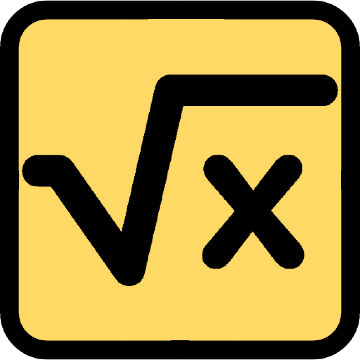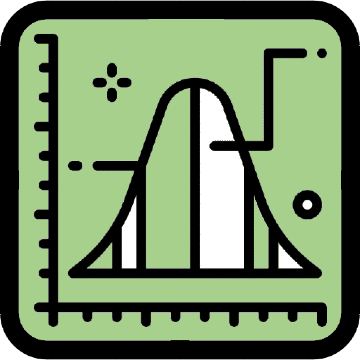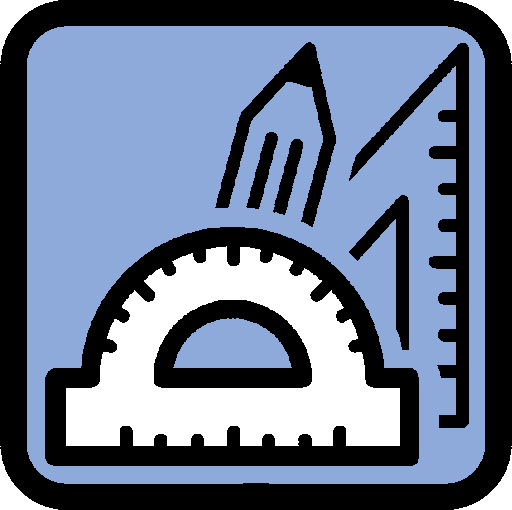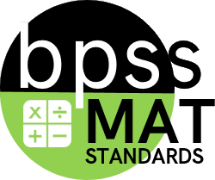MAT-00.AR  MAT-00.AR MAT-00.AR Domain  | (AR) Number and Operations Learners will develop a foundational understanding of the number system, operations, and computational fluency to create connections and solve problems within and across concepts.
|
Sub-Categories- (OA) Operations and Algebraic Thinking
Learners will analyze patterns and relationships to generate and interpret numerical expressions. - (RP) Ratios and Proportional Relationships
Learners will use ratios, rates, and proportions to model relationships and solve problems. - (EE) Expressions and Equations
Learners will look for, generate, and make sense of patterns, relationships, and algebraic symbols to represent mathematical models while adapting approaches in novel situations.
- (F) Functions
Learners will develop a foundational knowledge of functions and use them to model relationships between quantities.
Calculation Method for DomainsDomains are larger groups of related standards. The Domain Grade is a calculation of all the related standards. Click on the standard name below each Domain to access the learning targets and rubrics/ proficiency scales
for individual standards within the domain. |
|
MAT-00.AR.OA.01

|
Kindergarten (MAT) Targeted Standard
(AR) Algebraic Reasoning
(OA) Operations and Algebraic Thinking
Learners will analyze patterns and relationships to generate and interpret numerical expressions.
|
MAT-00.AR.OA.01 Automatically add and subtract within 5.
 Proficiency Scale Proficiency Scale
Progressions
Operations – Basic Facts
-
MAT-00.AR.OA.01 Automatically add and subtract within 5.
- MAT-01.AR.OA.01 Automatically add and subtract within 10.
- MAT-02.AR.OA.01 Automatically add and subtract within 20.
- MAT-03.AR.OA.01 Using mental strategies, multiply and divide basic facts within 100. Automatically multiply and divide up to 5 x 5 and 10s facts.
- MAT-04.AR.OA.01 Automatically multiply and divide through 10 x 10.
- MAT-05.AR.OA.01 Automatically multiply and divide through 12 x 12.
|
|
MAT-00.AR.OA.02

|
Kindergarten (MAT) Targeted Standard
(AR) Algebraic Reasoning
(OA) Operations and Algebraic Thinking
Learners will analyze patterns and relationships to generate and interpret numerical expressions.
|
MAT-00.AR.OA.02 For any number from 1 to 9, find the number that makes 10 when added to the given number, sharing the answer with a model, drawing, or equation.
 Proficiency Scale Proficiency Scale
Progressions
Adding On
-
MAT-00.AR.OA.02 For any number from 1 to 9, find the number that makes 10 when added to the given number, sharing the answer with a model, drawing, or equation.
- MAT-01.AR.OA.02 For any number from 1 to 19, find the number that makes 20 when added to the given number, sharing the answer with a model, drawing, or equation.
|
|
MAT-00.AR.OA.03

|
Kindergarten (MAT) Targeted Standard
(AR) Algebraic Reasoning
(OA) Operations and Algebraic Thinking
Learners will analyze patterns and relationships to generate and interpret numerical expressions.
|
MAT-00.AR.OA.03 Decompose numbers less than or equal to 10 into pairs in more than one way using verbal explanations, objects, or drawings.
 Proficiency Scale Proficiency Scale
Progressions
Decompose Numbers and/or Expressions
-
MAT-00.AR.OA.03 Decompose numbers less than or equal to 10 into pairs in more than one way using verbal explanations, objects, or drawings.
- MAT-01.AR.OA.03 Decompose numbers less than or equal to 20 in more than one way.
- MAT-09.AR.01 Use the structure of an expression (i.e., quadratic and exponential) to identify ways to rewrite it.
- MAT-09.AR.F.06 Write a function defined by an expression in different but equivalent forms to reveal and explain the different properties of the function.
- MAT-09.AR.F.11 Interpret the parameters in a linear, quadratic, or exponential function in context.
- MAT-12.AR.01 Use the structure of an expression (to extend to polynomial and rational expressions) to identify ways to rewrite it.
- MAT-12.AR.03 Interpret expressions that represent a quantity in context.
- MAT-12.AR.06 Rewrite simple rational expressions in different forms; write a(x)/b(x) in the form q(x) + r(x)/b(x), where a(x), b(x), q(x), and r(x) are polynomials with the degree of r(x) less than the degree of b(x), using inspection, division, or technology for the more complicated examples.
- MAT-12.AR.F.03 Write a function defined by an expression in different but equivalent forms to reveal and explain the different properties of the function.
- MAT-12.AR.20 Apply the Binomial Theorem for the expansion of (ax + by)n in powers of x and y for a positive integer n and integers a and b
|
|
MAT-00.AR.OA.04

|
Kindergarten (MAT) Targeted Standard
(AR) Algebraic Reasoning
(OA) Operations and Algebraic Thinking
Learners will analyze patterns and relationships to generate and interpret numerical expressions.
|
MAT-00.AR.OA.04 Solve authentic word problems with addition by putting together or adding to within 10.*
 Proficiency Scale Proficiency Scale
Progressions
Solve Problems Using Operations
-
MAT-00.AR.OA.04 Solve authentic word problems with addition by putting together or adding to within 10.
- MAT-01.AR.OA.06 Use the +, -, and = symbols accurately in an equation.
- MAT-01.AR.OA.04 Solve authentic word problems with addition, including three numbers and unknowns, within 20.
- MAT-02.AR.OA.03 Solve one- and two-step authentic word problems with addition within 100, including the use of unknowns.
- MAT-00.AR.OA.05 Solve authentic word problems with subtraction by taking apart or taking from within 10.
- MAT-01.AR.OA.05 Solve authentic word problems with subtraction, including unknowns, within 20.
- MAT-02.AR.OA.04 Solve one- and two-step authentic word problems with subtraction within 100, including the use of unknowns.
- MAT-02.AR.OA.05 Use repeated addition to find the total number of objects arranged in a rectangular array.
- MAT-03.AR.OA.03 Solve two-step authentic word problems using addition and subtraction within 1000, including equations with a letter as an unknown.
- MAT-03.AR.OA.04 Use strategies and visual models to solve authentic word problems with multiplication within 100, including unknowns, using grouping models and equations.
- MAT-03.AR.OA.05 Use strategies and visual models to solve authentic word problems with division within 100, including unknowns, using grouping models and equations.
- MAT-04.AR.OA.03 Solve multi-step authentic word problems using the four operations, including problems with interpreted remainders. Represent problems using equations, including a symbol as an unknown.
|
|
MAT-00.AR.OA.05

|
Kindergarten (MAT) Targeted Standard
(AR) Algebraic Reasoning
(OA) Operations and Algebraic Thinking
Learners will analyze patterns and relationships to generate and interpret numerical expressions.
|
MAT-00.AR.OA.05 Solve authentic word problems with subtraction by taking apart or taking from within 10.*
 Proficiency Scale Proficiency Scale
Progressions
Solve Problems Using Operations
-
MAT-00.AR.OA.04 Solve authentic word problems with addition by putting together or adding to within 10.
- MAT-01.AR.OA.06 Use the +, -, and = symbols accurately in an equation.
- MAT-01.AR.OA.04 Solve authentic word problems with addition, including three numbers and unknowns, within 20.
- MAT-02.AR.OA.03 Solve one- and two-step authentic word problems with addition within 100, including the use of unknowns.
- MAT-00.AR.OA.05 Solve authentic word problems with subtraction by taking apart or taking from within 10.
- MAT-01.AR.OA.05 Solve authentic word problems with subtraction, including unknowns, within 20.
- MAT-02.AR.OA.04 Solve one- and two-step authentic word problems with subtraction within 100, including the use of unknowns.
- MAT-02.AR.OA.05 Use repeated addition to find the total number of objects arranged in a rectangular array.
- MAT-03.AR.OA.03 Solve two-step authentic word problems using addition and subtraction within 1000, including equations with a letter as an unknown.
- MAT-03.AR.OA.04 Use strategies and visual models to solve authentic word problems with multiplication within 100, including unknowns, using grouping models and equations.
- MAT-03.AR.OA.05 Use strategies and visual models to solve authentic word problems with division within 100, including unknowns, using grouping models and equations.
- MAT-04.AR.OA.03 Solve multi-step authentic word problems using the four operations, including problems with interpreted remainders. Represent problems using equations, including a symbol as an unknown.
|
|
MAT-00.AR.OA.06

|
Kindergarten (MAT) Targeted Standard
(AR) Algebraic Reasoning
(OA) Operations and Algebraic Thinking
Learners will analyze patterns and relationships to generate and interpret numerical expressions.
|
MAT-00.AR.OA.06 Recognize, duplicate, complete, and extend repeating patterns in a variety of contexts.* (e.g., shape, color, size, objects, sounds, and movement)
 Proficiency Scale Proficiency Scale
Progressions
Patterns
-
MAT-00.AR.OA.06 Recognize, duplicate, complete, and extend repeating patterns in a variety of contexts (e.g., shape, color, size, objects, sounds, and movement).
- MAT-01.AR.OA.07 Identify, create, complete, and extend patterns that are repeating, increasing, and decreasing in a variety of contexts.
- MAT-02.AR.OA.06 Identify a group of objects from 0 to 20 as even or odd by showing even numbers as a sum of two equal parts.
- MAT-03.AR.OA.06 Identify arithmetic patterns and explain them using the properties of operations.
- MAT-04.AR.OA.06 Generate a number or shape pattern that follows a given rule while identifying apparent features of the pattern that were not explicit in the rule itself.
- MAT-05.AR.OA.05 Generate two numerical patterns using two given rules and form ordered pairs consisting of corresponding terms from the two patterns. (Graphing on a coordinate plane).
- MAT-09.AR.01 Use the structure of an expression (i.e., quadratic and exponential) to identify ways to rewrite it.
- MAT-12.AR.02 Use the structure of an expression (to extend to polynomial and rational expressions) to identify ways to rewrite it.
|
|
MAT-00.DPS  MAT-00.DPS MAT-00.DPS Domain  | (DPS) Data Probability and Statistics Learners will ask and answer questions by collecting, organizing, and displaying
relevant data, drawing inferences and conclusions and making predictions; and understanding and applying basic concepts of probability.
|
Sub-Categories- (D) Data
Learners will represent and interpret data. - (DA) Data Analysis
Learners will ask and answer questions by collecting, organizing, and displaying relevant data, drawing inferences and conclusions, and making predictions. - (P) Probability
Learners will understand and apply basic concepts of probability.
Calculation Method for DomainsDomains are larger groups of related standards. The Domain Grade is a calculation of all the related standards. Click on the standard name below each Domain to access the learning targets and rubrics/ proficiency scales
for individual standards within the domain. |
|
MAT-00.DPS.D.01

|
Kindergarten (MAT) Targeted Standard
(DPS) Data Probability and Statistics
(D) Data
Learners will represent and interpret data.
|
MAT-00.DPS.D.01 Sort and classify objects (up to 10) based on attributes and explain the reasoning used.*
 Proficiency Scale Proficiency Scale
Progressions
Data Collection
- MAT-00.DPS.D.01 Sort and classify objects (up to 10) based on attributes and explain the reasoning used.
- MAT-01.DPS.D.01 Collect, organize and represent data with up to three categories using picture and bar graphs.
- MAT-02.DPS.D.01 Formulate questions and collect, organize, and represent data, with up to four categories using single unit scaled pictures and bar graphs.
- MAT-03.DPS.D.01 Formulate questions to collect, organize, and represent data with more than four categories using scaled pictures and bar graphs.
- MAT-04.DPS.D.01 Formulate questions to collect, organize, and represent data to reason with math and across disciplines.
- MAT-06.DPS.DA.01 Write a statistical question that can be answered using measures of center or variability of a data set.
- MAT-07.DPS.DA.01 Identify the strengths and weaknesses of a population sample, including possible bias in the process of the data collection.
- MAT-12.DPS.06 Use data from a sample survey to estimate a population means or proportion; develop a margin of error through the use of simulation models for random sampling.
- MAT-12.DPS.09 Recognize the purposes of and differences among sample surveys, experiments, and observational studies; explain how randomization relates to each.
|
|
MAT-00.GM  MAT-00.GM MAT-00.GM Domain  | (GM) Geometry and Measurement Learners will use visualization, spatial reasoning, and geometric modeling to investigate the characteristics of figures, perform transformations, and construct logical arguments.
|
Sub-Categories- (G) Geometry
Learners will compose and classify figures and shapes based on attributes and properties; represent and solve problems using a coordinate plane. - (M) Measurement
Learners will represent and calculate measurement data, including time, money, and geometric measurement, and convert like measurement units within a given system.
- (AV) Area and Volume
Learners will use visualization and spatial reasoning to solve problems involving the area, surface area, and volume of geometric figures. - (GF) Geometric Figures
Learners will use visualization, spatial reasoning, and geometric modeling to investigate the characteristics of figures, perform transformations, and construct logical arguments.
Calculation Method for DomainsDomains are larger groups of related standards. The Domain Grade is a calculation of all the related standards. Click on the standard name below each Domain to access the learning targets and rubrics/ proficiency scales
for individual standards within the domain. |
|
MAT-00.GM.G.01

|
Kindergarten (MAT) Targeted Standard
(GM) Geometry and Measurement
(G) Geometry
Learners will compose and classify figures and shapes based on attributes and properties; represent and solve problems using a coordinate plane.
|
MAT-00.GM.G.01 Name shapes and identify them as two-dimensional regardless of their orientations or overall sizes.*
 Proficiency Scale Proficiency Scale
Progressions
Two-Dimensional Shapes
- MAT-00.GM.G.01 Name shapes and identify them as two-dimensional (squares, circles, triangles, rectangles)regardless of their orientations or overall size.
- MAT-00.GM.G.03 Compare and classify two-dimensional shapes to describe their similarities, differences, and attributes (squares, circles, triangles, rectangles).
- MAT-01.GM.G.01 Name shapes and identify them as two-dimensional (trapezoids, rhombuses, pentagons, hexagons, octagons).
- MAT-01.GM.G.03 Determine geometric attributes of two-dimensional and three-dimensional shapes.
- MAT-02.GM.G.01 Identify two-dimensional shapes (parallelograms and quadrilaterals).
- MAT-02.GM.G.03 Compose geometric shapes having specified geometric attributes, such as a given number of edges, angles, faces, vertices, and/or sides.
- MAT-03.GM.G.01 In two-dimensional shapes, identify lines, angles (right, acute, obtuse), and perpendicular and parallel lines.
- MAT-03.GM.G.02 Sort quadrilaterals into categories based on attributes.
- MAT-04.GM.G.01 Identify, label, and draw points, lines, line segments, rays, and angles (right, acute, obtuse).
- MAT-04.GM.G.02 Classify two-dimensional figures based on the presence or absence of parallel or perpendicular lines or the presence or absence of angles of specified size.
- MAT-05.GM.G.01 Classify two-dimensional figures in a hierarchy based on properties.
- MAT-10.GM.01 Know precise definitions of angle, circle, perpendicular line, parallel line, and line segment based on the undefined notions of point, line, and plane.
- MAT-10.GM.09 Prove and apply theorems about lines and angles.
MAT-10.GM.10 Prove and apply theorems about triangles.
- MAT-10.GM.11 Prove and apply theorems about parallelograms.
- MAT-10.GM.34 Identify the shapes of two-dimensional cross-sections of three-dimensional objects and identify three-dimensional objects generated by rotations of two-dimensional objects.
|
|
MAT-00.GM.G.02

|
Kindergarten (MAT) Targeted Standard
(GM) Geometry and Measurement
(G) Geometry
Learners will compose and classify figures and shapes based on attributes and properties; represent and solve problems using a coordinate plane.
|
MAT-00.GM.G.02 Name shapes and identify them as three-dimensional (cubes and spheres) regardless of their orientations or overall sizes.
 Proficiency Scale Proficiency Scale
Progressions
Three-Dimensional Shapes
- MAT-00.GM.G.02 Name shapes and identify them as three-dimensional (cubes and spheres) regardless of their orientations or overall size.
- MAT-01.GM.G.02 Name and identify solids as three-dimensional (cylinders, cones, triangular prisms, and rectangular prisms).
- MAT-01.GM.G.03 Determine geometric attributes of two-dimensional and three-dimensional shapes.
- MAT-02.GM.G.02 Identify two-dimensional shapes found within three-dimensional shapes.
- MAT-02.GM.G.03 Compose geometric shapes having specified geometric attributes, such as a given number of edges, angles, faces, vertices, and/or sides.
- MAT-06.GM.GF.03 Represent three-dimensional figures using nets made up of rectangles and triangles (right prisms and pyramids whose bases are triangles and rectangles). Calculate the surface area of prisms with rectangular and triangular bases using nets, including authentic problems.
|
|
MAT-00.GM.G.03

|
Kindergarten (MAT) Targeted Standard
(GM) Geometry and Measurement
(G) Geometry
Learners will compose and classify figures and shapes based on attributes and properties; represent and solve problems using a coordinate plane.
|
MAT-00.GM.G.03 Compare and classify two-dimensional shapes to describe their similarities, differences, and attributes (squares, circles, triangles, rectangles).
 Proficiency Scale Proficiency Scale
Progressions
Two-Dimensional Shapes
- MAT-00.GM.G.01 Name shapes and identify them as two-dimensional (squares, circles, triangles, rectangles)regardless of their orientations or overall size.
- MAT-00.GM.G.03 Compare and classify two-dimensional shapes to describe their similarities, differences, and attributes (squares, circles, triangles, rectangles).
- MAT-01.GM.G.01 Name shapes and identify them as two-dimensional (trapezoids, rhombuses, pentagons, hexagons, octagons).
- MAT-01.GM.G.03 Determine geometric attributes of two-dimensional and three-dimensional shapes.
- MAT-02.GM.G.01 Identify two-dimensional shapes (parallelograms and quadrilaterals).
- MAT-02.GM.G.03 Compose geometric shapes having specified geometric attributes, such as a given number of edges, angles, faces, vertices, and/or sides.
- MAT-03.GM.G.01 In two-dimensional shapes, identify lines, angles (right, acute, obtuse), and perpendicular and parallel lines.
- MAT-03.GM.G.02 Sort quadrilaterals into categories based on attributes.
- MAT-04.GM.G.01 Identify, label, and draw points, lines, line segments, rays, and angles (right, acute, obtuse).
- MAT-04.GM.G.02 Classify two-dimensional figures based on the presence or absence of parallel or perpendicular lines or the presence or absence of angles of specified size.
- MAT-05.GM.G.01 Classify two-dimensional figures in a hierarchy based on properties.
- MAT-10.GM.01 Know precise definitions of angle, circle, perpendicular line, parallel line, and line segment based on the undefined notions of point, line, and plane.
- MAT-10.GM.09 Prove and apply theorems about lines and angles.
- MAT-10.GM.10 Prove and apply theorems about triangles.
- MAT-10.GM.11 Prove and apply theorems about parallelograms.
- MAT-10.GM.34 Identify the shapes of two-dimensional cross-sections of three-dimensional objects and identify three-dimensional objects generated by rotations of two-dimensional objects.
|
|


